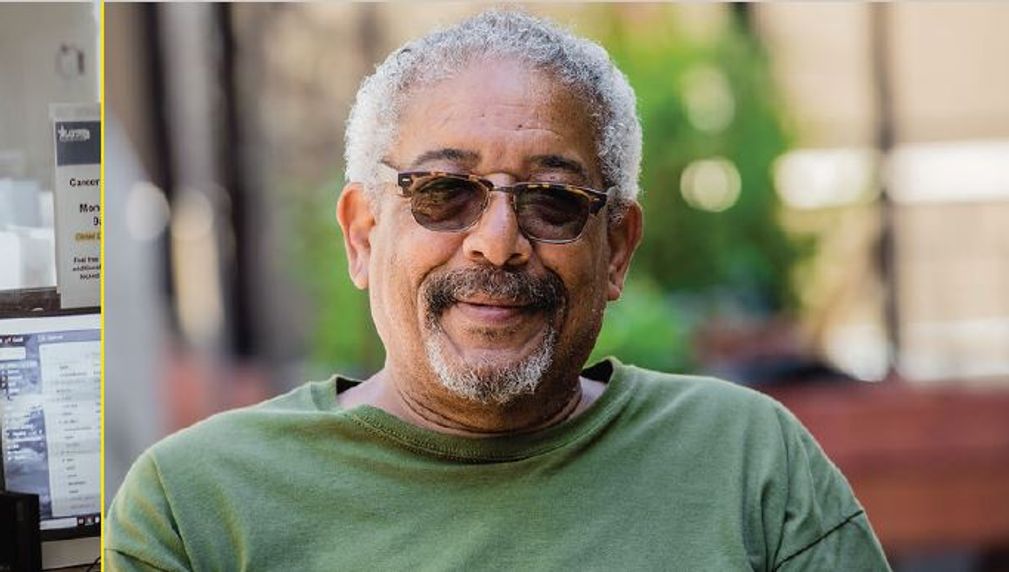Housing For Health: For Homeless Veterans
U.S.VETS is implementing a Housing for Health model for unhoused veterans on the West LA Veterans Affairs (WLAVA) Campus. This is the first implementation of this County-recognized model that will be specifically geared toward this vulnerable homeless population. It will include co-located housing and health care, directly on a VA campus with a medical center. This one-of-a-kind approach will enhance linkages to health care and supportive services provided by U.S.VETS and community partners.

What is the primary issue area that your application will impact?
Housing and Homelessness
In which areas of Los Angeles will you be directly working?
West LA
In what stage of innovation is this project, program, or initiative?
Pilot or new project, program, or initiative
What is your understanding of the issue that you are seeking to address?
LA has more veterans experiencing homelessness than any other county in the country. Though the County has made tremendous strides in decreasing veteran homelessness, there is a long way to go-almost 4,000 veterans remain unhoused (2022 Point-In-Time Count). In the service provision area where the West LA VA campus is located, veterans make up 13% of the local homeless population, compared to 6% of the County's homeless population overall. U.S.VETS was founded in Los Angeles in 1993, with the aim to directly serve unhoused and housing insecure veterans. Through the provision of housing, employment, mental health, and other wraparound services, we annually impact more than 10,000 veterans and family members in the County. Our experience has shown us that housing instability impacts veterans' mental and physical health; and that comprehensive services and access to health care are necessary for helping this vulnerable population attain stability and increase their wellbeing.
Describe the project, program, or initiative this grant will support to address the issue.
U.S.VETS is leveraging LA County's Housing for Health model and applying it to unhoused veterans at the WLAVA. This is the first implementation of this recognized model geared specifically toward veterans. This project brings together new housing for homeless veterans, supportive services, and health care, directly on a VA campus with a medical center. This approach will enhance linkages to health care and supportive services provided by U.S.VETS and supplemented by community providers. Veterans will access these services directly from the WLAVA hub: U.S.VETS' comprehensive services such as case management, mental health counseling, benefits assistance, workforce development, peer mentorship, telehealth accommodations, and transportation to appointments; health care through the VA, including primary care, pharmacy, and specialized care; partner-provided services such as legal aid; and campus amenities (once construction is complete) such as athletic spaces, a transit plaza, and community spaces. This unique application of the already successful Housing for Health model will translate into a more well-connected wraparound care model. Here, veterans will have access to care coordination, health treatment, behavioral health services, nurse services, and other health services - layered on to existing U.S.VETS services. The opportunity to have such a comprehensive network of services on the WLAVA campus will significantly decrease veteran homelessness now and in the future.
Describe how Los Angeles County will be different if your work is successful.
The vision is to first decrease veteran homelessness in Los Angeles, before ending it and then preventing it for future generations. Combating veteran homelessness will require a multi-pronged approach, including growing the local affordable housing inventory, providing linkages to health care and supportive services to currently unhoused veterans, and investing in robust prevention strategies. For this reason, U.S.VETS has partnered with Thomas Safran & Associates and Century Housing to develop the nation's largest veteran housing community at the WLAVA Campus. Construction is well underway and upon completion, there will be an additional 1,200 units of new, affordable housing for veterans and infrastructure that will support more than 3,000 veterans and family members on-site and in the community. By implementing the Housing for Health model, we can ensure the success of a new campus that will serve generations to come and ultimately help end veteran homelessness for good.
What evidence do you have that this project, program, or initiative is or will be successful, and how will you define and measure success?
LA County's Housing for Health model, which serves the general unhoused population in LA, has been in existence for more than a decade. This, however, will be the first implementation of this model tailored toward the veteran experience. The model is designed to provide housing opportunities and linkages to health care, to enhance the overall wellbeing of vulnerable populations. Similarly, the primary objective for U.S.VETS' iteration of the program is to connect LA's unhoused veterans-of which the majority are people of color, disabled, and/or experience mental health issues-to housing options, health care, and supportive services, now, in a veteran-specific, VA co-located environment. Success during the grant term will be measured by the number of veterans transitioning to permanent housing and remaining connected to wraparound supportive services. U.S.VETS uses an internal database to track all client outcomes, such as housing retention, income, and health-related outcomes.
Approximately how many people will be impacted by this project, program, or initiative?
Direct Impact: 50
Indirect Impact: 3,900